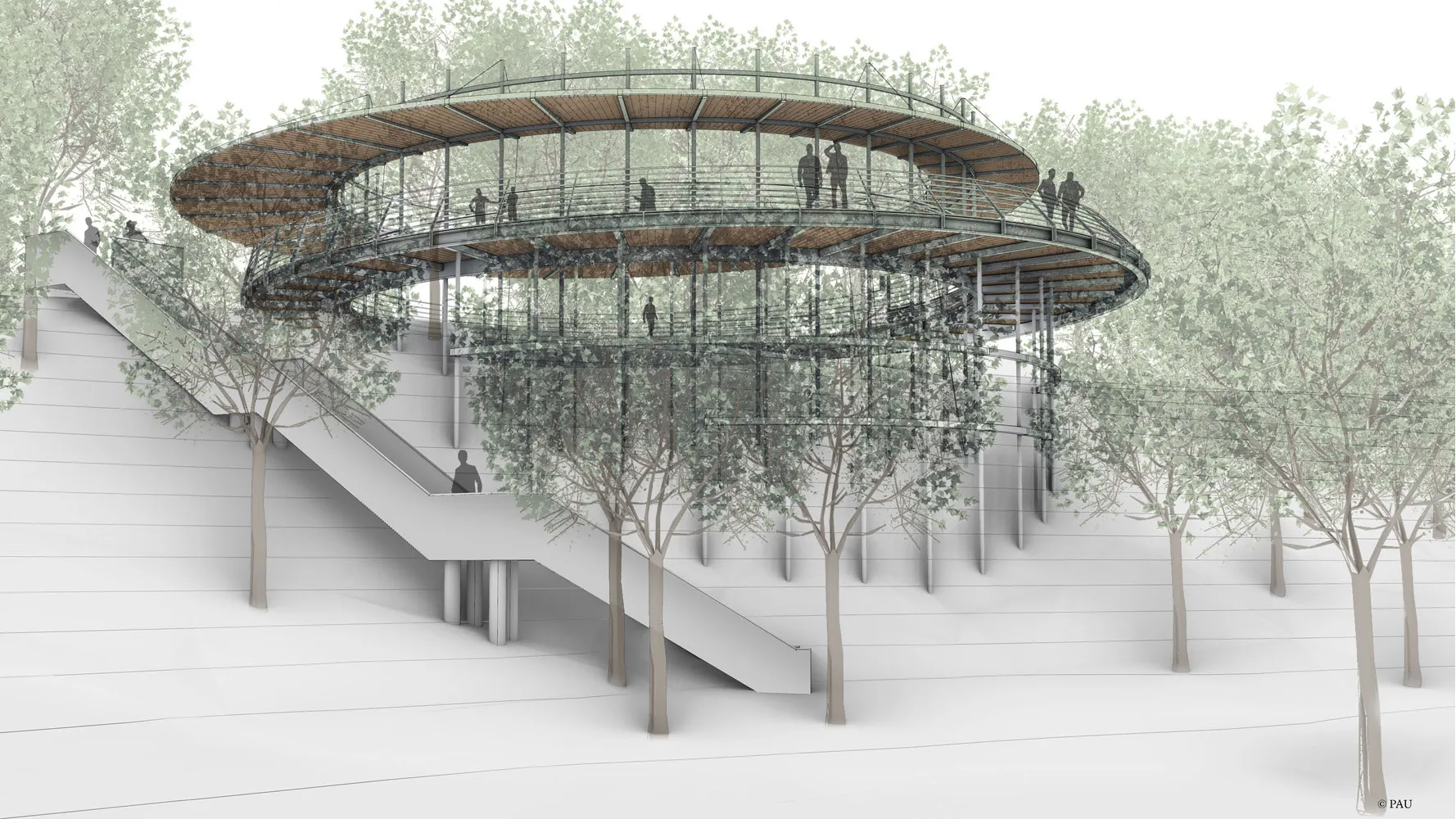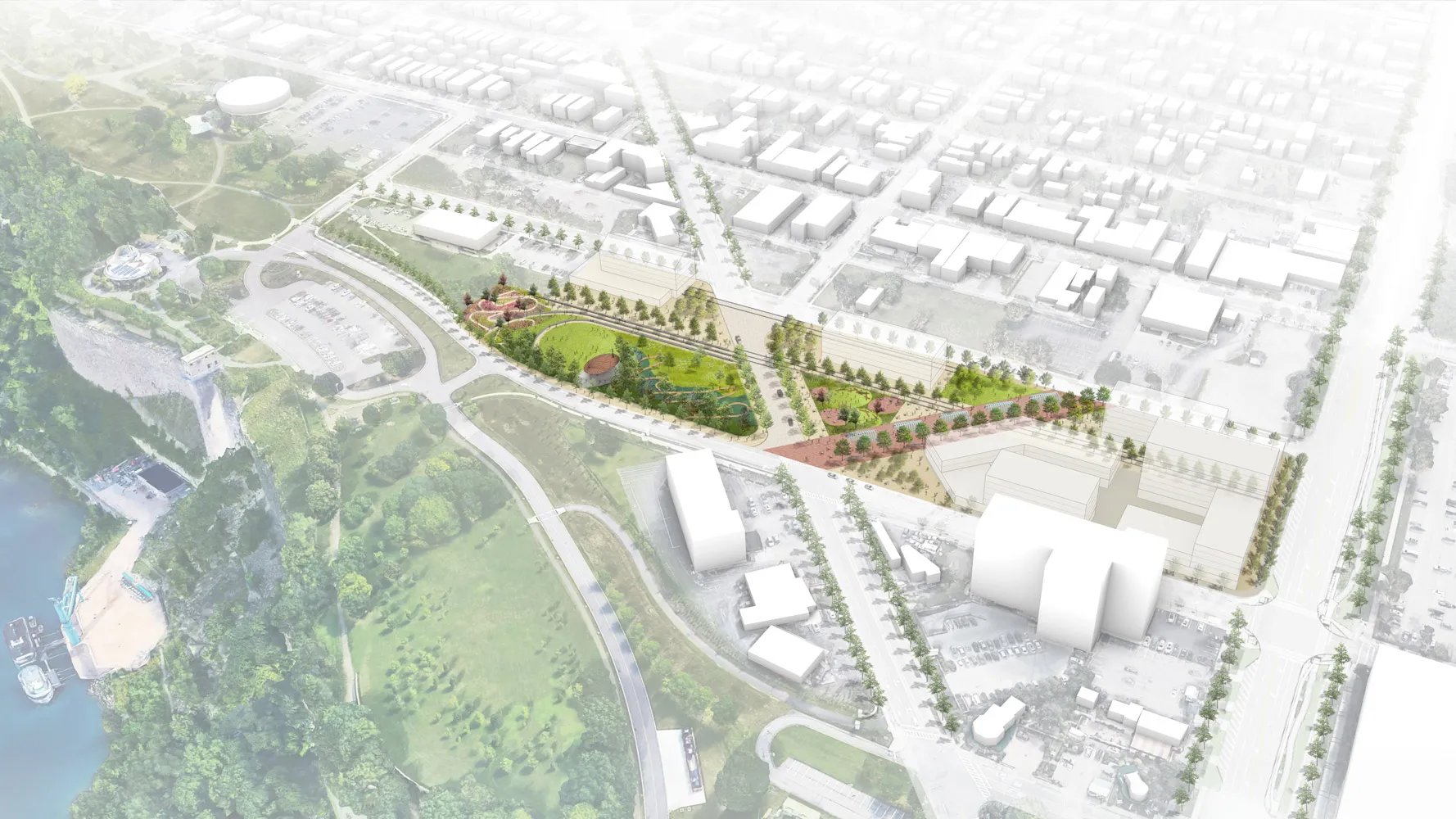PAU and Hargreaves Jones Reveal Design of Niagara Falls Heritage Gateways Project






A pair of circular, stacked observation decks set to rise above the highly trafficked, tree-lined entrance of Niagara Falls State Park are among the proposed features of the recently announced Niagara Falls Heritage Gateways project in the city of Niagara Falls, New York. The design of the $12 million state-funded project is by Practice for Architecture and Urbanism (PAU), joined by a larger team that includes landscape architecture firm Hargreaves Jones.
Focused on the northern and southern ends of the proposed Downtown Niagara Falls Heritage Path, the project forms a large-scale, redevelopment-spurring link between downtown Niagara Falls and the oldest—and arguably most famous—state park in the United States. With its sweeping multi-waterfall views and wide range of recreational activities, the 138-year-old Niagara Falls State Park attracts millions of visitors annually. In recent decades, the adjacent downtown, however, has largely diminished—the result of disinvestment and a shrinking regional population. Conceived to generate new economic development in and around the city’s triangle-shaped downtown, the Heritage Gateways project serves as the first phase of the Downtown Niagara Falls Development Strategy. The extensive revitalization proposal was collaboratively conceived by PAU and the USA Niagara Development Corporation, a subsidiary of Empire State Development, in 2021. Aiming to breathe new life into the city’s vacant lots and disused storefronts, the master plan endeavors to “reimagine a vibrant downtown in the near term…while continuing to promote sustainable and dynamic growth and development over time,” according to a statement.

Downtown Niagara Falls Heritage Path proposal. Image courtesy Practice for Architecture and Urbanism (PAU)
“We are forging a new path forward for Niagara Falls—making targeted investments that will help draw tourists and transform the community,” elaborated New York governor Kathy Hochul. "This project is a first step in New York State's strategy for bringing long-dormant sites, now controlled by the State, back to productive use,” added Empire State Development president, CEO, and commissioner Hope Knight.
PAU’s additions will encompass a pedestrian path along the Niagara Falls Power Company’s historic hydraulic canal with a design underscoring the impact of the world’s first large-scale hydroelectric generating station, which first opened in 1895; the observation decks that provide panoramic views of American Rapids and Goat Island; the reimagining of downtown’s DiFranco Park as a multi-use public pavilion for outdoor performance and gatherings; and a pocket park at the corner of Buffalo Avenue and 1st Street.
“Public infrastructure is at the center of successful urbanism,” says Vishaan Chakrabarti, founder and creative director of PAU. Chakrabarti added that the Heritage Gateways Project, “is a chance to demonstrate how thoughtful design can restore rather than remake our cities. It is by building on a foundation of shared history—instead of trying to reinvent cities from scratch—that we truly strengthen and benefit communities.”
In addition to the PAU-led project that’s anticipated to debut in 2024, Hochul also recently announced the $5 million renovation of the currently shuttered Niagara Gorge Discovery Center into a fully accessible, state-of-the-art living history museum dubbed Great Lakes 360. That space will focus on the wildlife and ecology of the Niagara River as well as the Great Lakes’ geological evolution and broader ecosystem.







